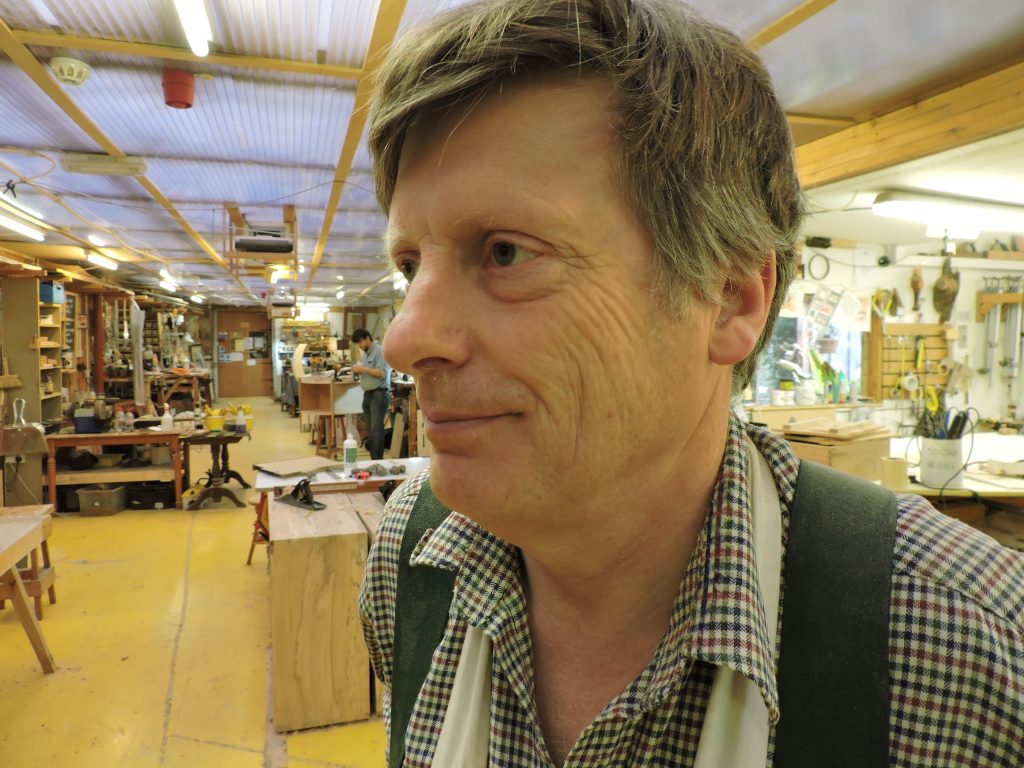Anselm Fraser, principal, the Chippendale school’s principal, writes in The Woodworker magazine.
Oscar Wilde, the 19th century playwright, expressed it perfectly.
In his play, Lady Windermere’s Fan, he wrote that a cynic is “a man who knows the price of everything and the value of nothing.”
Like much of Oscar Wilde’s work, his comedy hides a biting truth. We often consider moral or ethical values as being less important than financial worth. We allow greed to overrule good sense.
It’s an issue that is particularly pertinent for today’s woodworkers. Because the value that we place on a beautifully-crafted piece of furniture may be rather more than a prospective customer is prepared to pay for it.
Yes, it may have taken many, many hours to make, using the finest woods, veneers and delicate inlays. But if that prospective customer is looking for a simple table or chest of drawers, then he or she may be more interested in utility value than financial value.
In other words, spending days and weeks crafting the finest chest of drawers in the whole history of chests of drawers, and placing a huge price tag on it, is no guarantee of a sale.
Sensible price
In a world dominated by IKEA, furniture makers have to look imaginatively at the market, design and build accordingly. Most importantly, always have a sensible price in mind. We may be craftsmen and women, but our valuations have to be pragmatic.
The key concept is value. The painting hanging on our wall may only have aesthetic value, until we discover it’s a Picasso. At that point it acquires huge utility value as a way of paying off the mortgage.
In the same way, good furniture has both utility and aesthetic value. Our wonderful chest of drawers may be aesthetically beautiful but, if the drawers don’t open properly, it lacks utility value.
That balance between form and function is at the heart of all good design, from architecture to fine woodworking. Finding that balance is the first thing that furniture designers should always do. Who am I selling to, and what are the values my customer is looking for?
The fact is, good design must be about both the aesthetic and the utilitarian. If necessary, woodworkers shouldn’t be afraid to compromise, if compromise brings down the cost to an acceptable level.
That budget will be influenced by two things – the cost of materials and the labour costs of designing and making the piece of furniture. It’s a deceptively simple bit of arithmetic: costs + your time = price.
Of course, it’s a little bit more complicated. Costs aren’t just wood and screws. They also include everything from heating to water, local taxes to equipment.
Expectations
It’s a process of determining cost and then building in a reasonable profit margin.
Make something for £10,000 and sell it for £11,800, and your gross profit is £1,800. You will also go out of business rather rapidly.
As a rule, gross margins after direct costs should be in the region of 40-50%.
Generally, improving profit margin should always be a clear and unambiguous business objective. But, equally, you must have realistic expectations about what customers may be prepared to pay.
The problem is that many woodworkers think too highly of themselves. They charge a Rolls-Royce rate, when their customer is looking for a Fiat Uno. (All too infrequently, alas, the opposite can be true!)
Also remember that Pablo Picasso only survived during his early career in Paris by burning most of his paintings to keep warm.
I always advise our students to be pragmatic, certainly until they have built a reputation. There’s no point in graduating from a furniture school and thinking you are immediately a master of the woodworking universe.
That takes time and, in the meantime, it’s better to under-sell rather than not sell. Remember also another line from Lady Windermere’s Fan: “We are all in the gutter, but some of us are looking at the stars.”
Start low, be sensible and pragmatic, but always aim higher and higher.
Note: A couple of places remain on our professional nine-month course which begins in October. For more information, click here.
